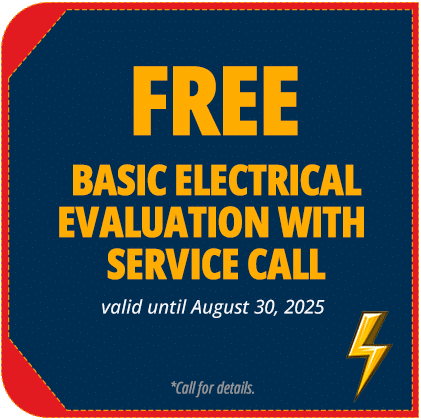Landscape Lighting- Want to know how the right lighting can transform a simple garden into a magical nighttime oasis? Picture yourself sitting in your backyard under the stars, surrounded by perfectly placed lights that highlight your favorite trees and paths.
We’re diving into the top five landscape lighting design ideas that not only enhance your property’s beauty after sunset but also improve safety and increase your home’s curb appeal. Perfect for residents in Katy, TX, Richmond, TX, and beyond, these ideas will light up your world!

Why Landscape Lighting?
Enhancing Curb Appeal
Landscape lighting can transform the appearance of your home, making it stand out and look more attractive. By highlighting architectural features and garden elements, well-designed lighting creates an inviting ambiance and enhances curb appeal.
Whether you’re looking to impress guests or potential buyers, investing in landscape lighting can significantly boost your home’s aesthetic value.
Improving Safety and Security
Safety and security are paramount concerns for homeowners. Landscape lighting plays a crucial role in ensuring both. Well-lit pathways, steps, and driveways prevent accidents and injuries by illuminating potential hazards.
Additionally, a well-lit exterior deters potential intruders, as they are less likely to approach a brightly lit home.
Motion sensor lights can provide an extra layer of security, lighting up dark areas when movement is detected, which can be a powerful deterrent to would-be burglars.
Extending Usable Outdoor Spaces
Imagine enjoying your garden or patio long after the sun has set. Landscape lighting extends the usability of outdoor spaces, allowing you to make the most of your garden, patio, or deck in the evening.
Whether you want to host an outdoor dinner party, relax with a book, or simply enjoy a quiet evening outside, proper lighting makes these activities possible.
By strategically placing lights, you can create different zones and moods in your outdoor areas, enhancing their functionality and enjoyment.
1. Pathway Lighting
Types of Pathway Lights
Pathway lighting is essential for guiding guests safely to your front door and around your garden. There are various types of pathway lights to consider:
- Solar Path Lights: Eco-friendly and easy to install, these lights harness solar energy during the day to illuminate pathways at night.
- Low Voltage Path Lights: These lights provide consistent illumination and are energy-efficient, making them a popular choice for many homeowners.
- LED Path Lights: Known for their longevity and energy efficiency, LED lights are a reliable option for pathway lighting.
Best Practices for Pathway Lighting Design
When designing your pathway lighting, consider these best practices:
- Spacing: Place lights at regular intervals to ensure even illumination without creating dark spots.
- Height: Install lights low to the ground to minimize glare and maximize visibility.
- Style: Choose fixtures that complement the overall design of your landscape lighting and home.
2. Accent Lighting
Uplighting for Dramatic Effect
Uplighting is a technique where lights are placed on the ground and directed upwards, creating a dramatic effect by highlighting trees, statues, and architectural features. This method can make your garden look magical by adding depth and dimension to the landscape.
Downlighting for Subtle Illumination
In contrast, downlighting involves placing lights higher up, such as in trees or on structures, and directing the light downwards.
This technique creates a soft, moonlit effect, perfect for illuminating pathways, garden beds, or seating areas without overpowering the scene.
Best Uses for Accent Lighting
Accent lighting is versatile and can be used in various ways:
- Highlighting focal points: Use accent lights to draw attention to statues, water features, or beautiful plants.
- Creating shadows: Position lights to cast interesting shadows, adding depth and interest to your garden.
- Enhancing textures: Light up textured surfaces like stone walls or bark to enhance their visual appeal.
3. Garden and Plant Lighting
Highlighting Trees and Shrubs
Trees and shrubs are natural focal points in any garden, and lighting them can create stunning visual effects. Use spotlights to highlight the canopy of a large tree or place well lights around the base of shrubs to make them stand out.
Using Spotlights and Well Lights
Spotlights and well lights are ideal for garden and plant lighting. Spotlights provide focused beams of light, perfect for highlighting specific features, while well lights are recessed into the ground, offering a subtle and sleek look.
Sustainable Solar Options
For eco-conscious homeowners, solar garden lights are a great choice. They are easy to install, require no wiring, and harness the sun’s energy to light up your plants and garden features, making them both cost-effective and environmentally friendly.
4. Water Feature Lighting
Illuminating Ponds and Fountains
Water features like ponds and fountains add a serene and dynamic element to your garden. Illuminating them can enhance their beauty and create a mesmerizing effect. Use underwater lights to light up the water from within, or place spotlights around the perimeter to highlight the water’s movement.
Submersible Lights and Their Benefits
Submersible lights are specifically designed for use in water features. They are waterproof and can be placed directly in ponds or fountains, creating a magical glow that enhances the visual appeal of the water. These lights are also safe and durable, designed to withstand prolonged exposure to water.
Safety Tips for Water Feature Lighting
When installing water feature lighting, keep these safety tips in mind:
- Use low voltage lights: They are safer around water and reduce the risk of electrical shock.
- Ensure proper sealing: Make sure all fixtures are waterproof and securely sealed.
- Consult a professional: For complex installations, it’s best to consult a professional to ensure safety and compliance with local regulations.
5. Deck and Patio Lighting
Creating an Ambiance with String Lights
String lights are a popular choice for deck and patio lighting due to their versatility and charm. They can be draped across pergolas, wrapped around railings, or hung overhead to create a warm, inviting atmosphere perfect for entertaining or relaxing.
Installing Deck Post Lights
Deck post lights are installed on the posts or railings of your deck, providing both safety and ambiance. They illuminate the edges of your deck, making it safer to navigate while adding a stylish touch to the overall design.
Incorporating Recessed Lighting
Recessed lighting involves installing lights flush with the surface, creating a sleek and unobtrusive look. Use recessed lights in steps, under benches, or along the perimeter of your deck to provide subtle illumination that enhances safety and aesthetics.
6. Hardscape Lighting
Techniques for Lighting Stone Walls and Pathways
Hardscape lighting involves illuminating non-plant elements of your garden, such as stone walls, pathways, and patios. Techniques include:
- Wall washing: Using wide-angle lights to evenly illuminate a wall’s surface.
- Grazing: Placing lights close to the wall to highlight its texture and create interesting shadows.
- Path lighting: Installing lights along pathways to guide the way and enhance safety.
Best Hardscape Lighting Fixtures
For hardscape lighting, consider these fixtures:
- LED Wall Washers: Ideal for evenly illuminating large surfaces.
- In-ground Lights: Perfect for pathways and driveways.
- Spotlights: Versatile for highlighting architectural features and textures.
Maintenance Tips
To keep your hardscape lighting in top condition:
- Clean regularly: Remove dirt and debris to maintain optimal light output.
- Check for damage: Inspect fixtures for cracks or water damage.
- Replace bulbs as needed: Ensure all lights are functioning properly for consistent illumination.
7. Motion Sensor Lighting
Benefits of Motion Sensor Lights
Motion sensor lights are an excellent addition to any landscape lighting design. They enhance security by detecting movement and illuminating dark areas, deterring potential intruders.
Additionally, they are energy-efficient, as they only turn on when needed, reducing electricity consumption.
Choosing the Right Motion Sensor Light
When selecting motion sensor lights, consider the following factors:
- Range and sensitivity: Choose a light with a suitable detection range for your needs.
- Brightness: Ensure the light is bright enough to cover the desired area.
- Durability: Opt for weather-resistant fixtures that can withstand outdoor conditions.
Installation Tips
For effective installation of motion sensor lights:
- Position strategically: Place lights at entry points and dark corners for maximum coverage.
- Adjust sensitivity: Set the sensitivity to avoid false triggers from small animals or passing cars.
- Test thoroughly: Ensure the lights activate correctly and cover the intended areas.
9. Solar Landscape Lighting
Advantages of Solar Lighting
Solar landscape lighting offers numerous benefits:
- Eco-friendly: Uses renewable solar energy, reducing your carbon footprint.
- Cost-effective: Lower electricity bills and minimal maintenance costs.
- Easy installation: No wiring is required, making them ideal for DIY projects.
Maximizing Solar Light Efficiency
To get the most out of your solar lights:
- Place in direct sunlight: Ensure the solar panels receive ample sunlight during the day.
- Keep panels clean: Regularly clean the panels to remove dirt and debris.
- Replace batteries as needed: Over time, solar light batteries may need replacement to maintain performance.
10. Low Voltage Lighting
Benefits of Low Voltage Systems
Low-voltage lighting systems offer several advantages:
- Safety: Lower the risk of electrical shock, making them safe for outdoor use.
- Energy efficiency: Consumes less electricity compared to high voltage systems.
- Versatility: Suitable for various applications, from pathway lighting to accent lighting.
Installing Low Voltage Lights
To install low voltage lights:
- Plan your layout: Determine where you want to place the lights.
- Install the transformer: Connect the transformer to your main power supply.
- Run the cables: Lay the low-voltage cables along your planned layout.
- Connect the fixtures: Attach the lights to the cables and secure them in place.
- Test the system: Ensure all lights are working correctly before finalizing the installation.
Smart Lighting Solutions
Integrating Smart Technology in Landscape Lighting
Smart lighting solutions allow you to control your landscape lights remotely using a smartphone or voice commands. Integration with smart home systems like Amazon Alexa or Google Home offers convenience and flexibility, enabling you to schedule lighting, adjust brightness, and even change colors with ease.
Tips for Using Smart Controls
For effective use of smart lighting controls:
- Create schedules: Automate your lights to turn on and off at specific times.
- Set scenes: Customize lighting scenes for different moods and occasions.
- Monitor usage: Use the app to track energy consumption and optimize efficiency.
DIY Landscape Lighting Installation
Planning Your Lighting Layout
A well-thought-out landscape lighting plan is crucial for a successful installation. Consider the following steps:
- Identify focal points: Determine which features you want to highlight.
- Map out pathways: Plan lighting for walkways and driveways to ensure safety.
- Choose fixture types: Select appropriate lights for different areas of your landscape.
Step-by-Step Installation Guide
Follow these steps for a DIY installation:
- Gather materials: Ensure you have all the necessary tools and fixtures.
- Lay out the lights: Position the lights according to your plan before installation.
- Install the transformer: Connect it to your main power supply.
- Run the cables: Lay the cables along your planned layout, securing them with stakes.
- Connect the fixtures: Attach the lights to the cables and test each one.
- Bury the cables: Once everything is working, bury the cables and finalize the installation.
Common Mistakes to Avoid
Avoid these common mistakes to ensure a successful installation:
- Overloading circuits: Ensure the total wattage of your lights does not exceed the transformer’s capacity.
- Poor placement: Avoid placing lights too close together or too far apart.
- Skipping maintenance: Regularly check and clean your lights to maintain performance.
Why Professional Installation Matters
Expertise and Experience: Professionals have the knowledge and experience to create a well-designed lighting plan tailored to your specific landscape. Their expertise ensures that all aspects of the installation, from electrical connections to fixture placement, are done correctly and safely.
Time-Saving: Hiring a professional can save you significant time and effort. They can complete the installation efficiently, allowing you to enjoy your beautifully lit landscape without the hassle of a DIY project.
Quality Assurance: With a professional installation, you can be assured of high-quality work that complies with local regulations. Professionals use the best materials and techniques to ensure that your landscape lighting system is durable, efficient, and reliable.
Finding the Right Landscape Lighting Professional
To find a reputable professional:
- Check reviews: Look for reviews and testimonials from previous clients.
- Ask for referrals: Seek recommendations from friends or neighbors.
- Verify credentials: Ensure the professional is licensed and insured.
Cost Considerations
When budgeting for landscape lighting, consider:
- Initial installation costs: Including fixtures, cables, and labor.
- Maintenance costs: Regular upkeep and potential repairs.
- Energy costs: Ongoing electricity expenses, especially for non-solar systems.
Maintenance and Troubleshooting
Regular Maintenance Tips
To keep your landscape lighting in top condition:
- Clean fixtures: Regularly wipe down lights to remove dirt and debris.
- Check connections: Ensure all electrical connections are secure and free of corrosion.
- Replace bulbs: Swap out any burnt-out bulbs promptly to maintain consistent illumination.
Troubleshooting Common Issues
Common issues and solutions include:
- Flickering lights: Check for loose connections or faulty bulbs.
- Dim lights: Ensure the transformer is not overloaded and that cables are in good condition.
- Non-working lights: Test the power source and check for any damaged wiring.
When to Replace Fixtures
Replace your fixtures when:
- They are damaged: Cracked or broken fixtures should be replaced for safety and aesthetics.
- They are outdated: Upgrade to newer, more efficient models to save energy and improve performance.
- They no longer meet your needs: If your landscape design changes, you may need different types of lighting.
Illuminate Your Outdoors with The Local Electrician!
Are you ready to transform your outdoor spaces with stunning landscape lighting? The Local Electrician is here to help!
Our expert team provides professional and reliable lighting solutions in Katy, TX, and Richmond, TX. Whether you need pathway lighting, accent lights, or a complete landscape lighting overhaul, we’ve got you covered.
Don’t wait to enhance your home’s beauty, safety, and functionality. Contact us today to schedule a consultation and light up your nights with The Local Electrician!

Landscape Lighting FAQs
How much does landscape lighting cost?
The cost of landscape lighting varies widely depending on the size of your yard, the types of lights you choose, and whether you hire a professional or do it yourself.
What are the best types of lights for different areas of my yard?
For pathways, low-voltage or solar path lights are ideal. Spotlights and well lights work well for highlighting plants and trees. Deck and patio areas benefit from string lights or recessed lighting, while motion sensor lights enhance security around entry points.
How do I maintain my landscape lighting system?
Regular maintenance involves cleaning the fixtures, checking and tightening connections, replacing bulbs as needed, and inspecting the system for any signs of damage or wear.
Can I install landscape lighting myself?
Yes, many homeowners opt for DIY installation. It’s important to plan your layout, choose the right fixtures, and follow a step-by-step guide to ensure a successful installation. However, for complex setups or if you’re unsure, hiring a professional might be a better option.
What are the benefits of using solar landscape lights?
Solar landscape lights are eco-friendly, cost-effective, and easy to install. They harness solar energy during the day and illuminate your garden at night without the need for wiring or an external power source.






























